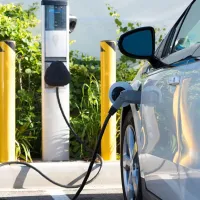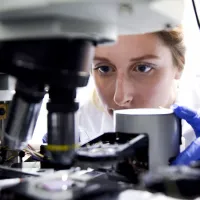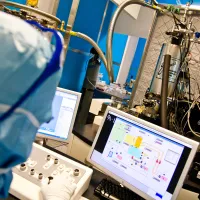Technical specification
Tempress LPCVD poly furnace
The poly furnace can be used to deposit undoped amorphous and polycrystalline silicon. It provides:
- deposition temperatures of around 625C to deposit polycrystalline silicon and 540C to deposit amorphous silicon
- high wafer throughput
- accepts wafers up to 200mm in diameter.
Tempress LPCVD nitride furnace
The nitride furnace can be used to deposit silicon nitride. It offers:
- deposition temperature of around 740C
- plasma enhanced chemical vapour deposition for lower temperatures
- very high wafer throughput
- accepts wafers up to 200mm in diameter.
OPT Plasmalab system 100 PECVD
Our PECVD system is used to deposit amorphous and polycrystalline silicon, germanium and silicon-germanium. The system offers:
- a deposition temperature up to 650C
- deposition rate for amorphous silicon of >25nm/min and for polysilicon of >40nm/min.
- accepts wafers up to 200mm in diameter
- can do depositions on small pieces of silicon placed on a larger wafer
OPT Plasmalab system 100 liquid source PECVD
Our liquid source system is used to deposit silicon dioxide, silicon nitride and rare earth doped oxides. This machine offers:
- two liquid precursors, one for TEOS and one for rare earth doped oxides.
- a low frequency and high frequency (RF) plasma source
- accepts wafers up to 200mm in diameter
- can do depositions on small pieces of silicon placed on a larger wafer.
OPT Nanofab 1000 agile
Our nanofab system is used to deposit carbon nanotubes and silicon, silicon-germanium and germanium nanowires. The machine offers:
- n-type (phosphorus) or p-type (boron) doping
- deposition temperature up to 1000C
- accepts wafers up to 200mm in diameter
- can do depositions on small pieces of silicon placed on a larger wafer.
OPT FlexAl RPX
Our RPX system is equipped with four liquid precursor modules and can deposit up to four different ALD layers in the same run. It can be used to deposit HfO2, TiN, ZnO and Al2O3 using TEMAH, TiCl4, DEZ and TMA precursors respectively. The system offers:
- deposition rate is typically between 0.2 and 1.5 angstrom per cycle
- accepts wafers up to 200mm in diameter and can do depositions on small pieces of silicon placed on a larger wafer.
ASM Epsilon epitaxy system
Our epitaxy system can be used to grow epitaxial silicon layers, boron and phosphorus marker layers, compressively strained silicon-germanium layers on a silicon substrate, tensile strained silicon layers on a relaxed silicon-germanium buffer, silicon-germanium multi quantum wells and germanium quantum dots.








